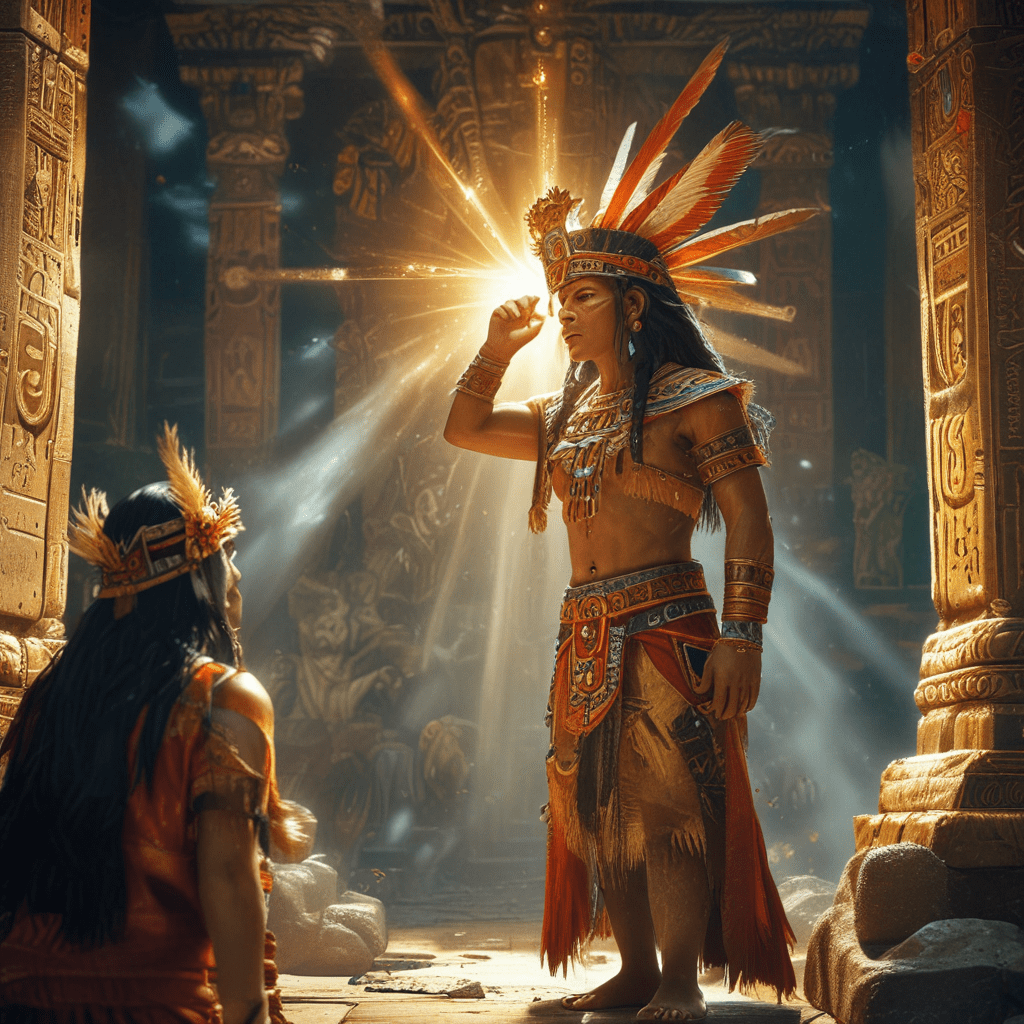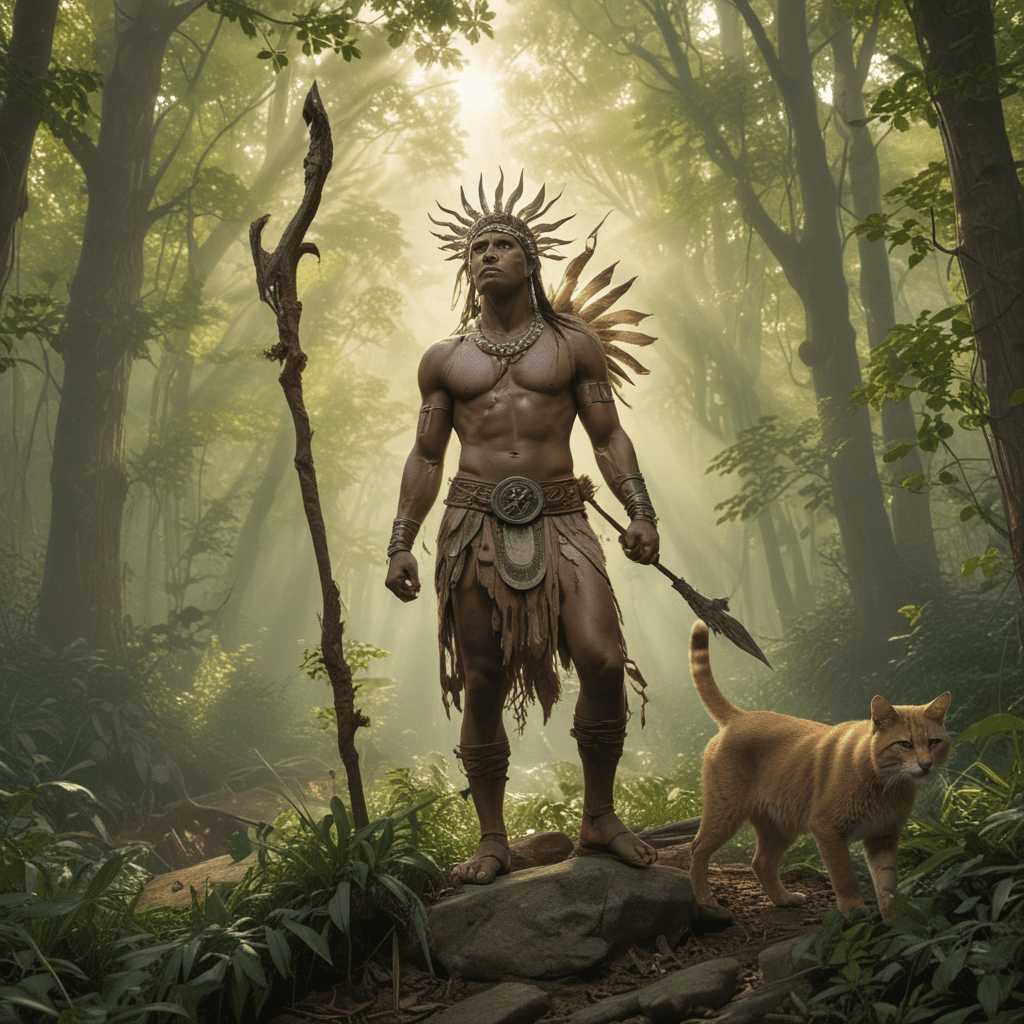1. Introduction
The Inca Empire, spanning the Andes Mountains from southern Colombia to central Chile, flourished for over a century. During this time, the Incas developed a rich and complex religion that centered around a pantheon of deities. Their creation story, known as the Viracocha myth, holds significant importance in understanding not only their religious beliefs but also their worldview and social structure.
Religion played a vital role in Inca society. The Incas believed their gods and goddesses controlled all aspects of life, from the weather and agriculture to human destiny. They constructed elaborate temples and offered sacrifices to appease and honor these deities. The creation myth served as a vital explanation for the world's origins and humanity's place within it, providing a sense of order and meaning to their existence.
2. Viracocha: The Creator God
Viracocha, the supreme deity of the Inca pantheon, reigned as the creator god. In the myth, Viracocha emerged from the depths of Lake Titicaca, bringing forth light and order to the previously chaotic and unformed world. He then created the first humans from clay, breathing life into them and granting them the knowledge and skills necessary for survival.
Viracocha takes on different forms and roles in various versions of the myth. In some tales, he appears as a bearded old man carrying a staff, while in others, he is depicted as a younger, more dynamic figure. Despite these variations, Viracocha consistently embodies the power of creation and the ability to shape the world.
3. The Flood and the Repopulation of the Earth
The Incan creation myth also includes a significant flood narrative. According to the myth, Viracocha grew dissatisfied with humanity's wickedness and unleashed a devastating flood to cleanse the Earth. Only a few righteous individuals survived, finding refuge in caves or on mountaintops. After the floodwaters receded, Viracocha repopulated the Earth, sending forth new humans from caves and lakes.
The flood myth plays a crucial role in the Incan worldview. It emphasizes the cyclical nature of life, destruction, and rebirth, and it reinforces the belief in Viracocha's ultimate power and authority. Additionally, the myth serves as a warning against human misconduct and emphasizes the importance of living in harmony with the divine will.
The Creation Story of the Incan Gods: An Outline
6. The Importance of Sacrifice
Sacrifice occupied a central place in Incan religious practices. The Incas believed that sacrifices appeased the gods and ensured their continued favor. These offerings varied in type and scale, ranging from offerings of food and drink to the sacrifice of animals and even humans.
The most significant sacrifices were those offered during the Capacocha ceremony, a grand festival held every year in Cuzco. During this ceremony, young children from across the empire were sacrificed to the gods. These children were carefully chosen and considered to be pure offerings. Their sacrifice was believed to ensure the well-being of the Inca Empire and its people.
7. The Incan Creation Myth and the Natural World
The Incan creation myth deeply reflects the Inca understanding of the natural world. The story intertwines narratives about the origin of the Earth, the creation of humanity, and the emergence of the celestial bodies. This intricate link between mythology and the natural world reveals the profound respect the Incas held for the environment.
In the myth, mountains are often presented as sacred places where the gods reside or emerge from. Rivers, too, are revered as life-giving sources, symbolizing the flow of time and the continuity of life. The celestial bodies, especially the Sun and the Moon, play vital roles in regulating the seasons and ensuring agricultural success. The close relationship between the creation myth and the natural world reinforces the Inca belief in the interconnectedness of all things.
8. The Spread of the Myth and its Influence
The story of Viracocha and the creation of the world spread widely throughout the Inca Empire through oral traditions and artistic representations. The myth served to unify the diverse populations under Inca rule, providing them with a shared origin story and a common set of beliefs. Additionally, the creation myth played a critical role in legitimizing the Inca rulers, who claimed direct descent from the Sun God, Inti, himself a descendant of Viracocha.
9. Archaeological Evidence and Interpretation
Archaeological evidence provides valuable insights into the Incan creation myth. Representations of Viracocha and other deities appear in various forms, including pottery, textiles, and metalwork. These artistic depictions offer clues about the physical attributes and symbolism associated with these gods. Moreover, archaeological remains of temples and sacred sites shed light on the Incas' religious practices and rituals connected to the creation myth.
10. Comparisons to Other Creation Myths
The Incan creation myth shares similarities with creation stories from other cultures around the world. Like many other myths, it features a supreme creator god, a flood narrative, and the emergence of humanity from the Earth. These commonalities point to shared human experiences and anxieties concerning the origins of the world and humanity's place within it. However, the Incan creation myth also possesses unique elements, such as the emphasis on the Sun God and the role of sacrifice, reflecting the specific cultural and environmental context of the Inca civilization.
FAQs
What are the key figures in the Incan creation myth?
- Viracocha, the supreme creator god.
- The Flood survivors who repopulated the Earth.
- The Ayar siblings, legendary founders of the Inca civilization.
What are the main events in the Incan creation myth?
- The creation of the world and the first humans by Viracocha.
- The flood that destroys humanity and the subsequent repopulation.
- The creation of the Sun, Moon, and stars.
- The emergence of the Inca civilization from Lake Titicaca.
What are the main themes of the Incan creation myth?
- The power and authority of the creator god.
- The cyclical nature of life, destruction, and rebirth.
- The importance of sacrifice and appeasement of the gods.
- The sacredness of the natural world.
- The legitimacy of Inca rule and its connection to the Sun God.

